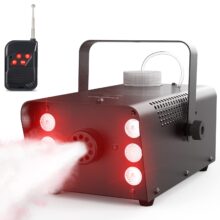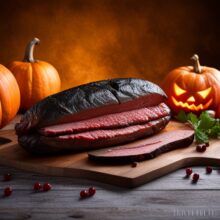Finishing Brisket in the Oven Cooking a brisket in two stages
Finishing a brisket in the oven does not change the flavor or quality of the meat. You should continue cooking the brisket in the smoker as usual, but finish it in the oven to slow down the cooking process and maintain the smoky flavor. You can even finish cooking a brisket in the oven throughout the winter. The flavor will not be affected and the brisket will retain its moist and tender texture.
Cooking a brisket in two stages
One way to ensure a succulent brisket is to cook it in two stages, so that the fattier portion is done first. This will allow the meat to retain its moisture while the lower portion cooks through the second stage. The temperature should stay above 140degF for at least two hours. It is also recommended to let the brisket rest for an hour or so after the first stage.
The first stage of cooking a brisket involves allowing it to rest overnight at a temperature of 210-220 degrees Fahrenheit. The second stage of cooking the brisket will take anywhere from four to six hours, depending on the size of the brisket. The brisket should remain warm for about fifteen to thirty minutes before serving. In either case, it should reach an internal temperature of 200 degrees Fahrenheit.
Before cooking the brisket, trim away the top fat cap and silver skin. Be sure to cut away the silver skin from the brisket if you wish to have a tender piece. Then, season the meat evenly with 50:50 salt and freshly ground pepper. The final stage is the slow cooking. Cooking the brisket in two stages will yield a juicy and succulent meat.
The brisket is a versatile cut of beef that is easy to prepare. While other beef cuts can go from luscious to overdone in a matter of minutes, the brisket is less sensitive. With a bit of patience, you will enjoy tender meat for several hours. And the best part is that it is so much easier to clean up than other meat cuts.
Finishing a brisket in the oven
After smoking and grilling a brisket to your desired level of doneness, you can finish it in the oven. Unlike smoking, this method will not destroy the meat, and will actually cut down on the cooking time. The smoky barbecue flavor will remain. While finishing a brisket in the oven takes a bit of time and a bit of expertise, it will be well worth it in the end.
The only way to avoid dryness while cooking a brisket is to slowly and carefully. The key is to avoid overcooking the meat and allowing the collagen to break down into gelatin. This is the only way to avoid dryness and avoid overcooking. A brisket’s fat layer should be about one-fourth inch thick. Once the brisket is ready, brush it liberally with worcestershire sauce and sprinkle it with brisket rub made of salt, celery salt, garlic powder, and onion powder.
Another way to finish a brisket in the oven is to wrap it in foil. This method is faster than smoking and allows you to gauge the final temperature more accurately. Once the brisket is fully cooked, you can use the probe to check if it has reached the desired temperature. You can use the probe to check the internal temperature, but it won’t probe as easily as the brisket finished continuously in the oven. In an emergency situation, finishing a brisket in the oven can save your day.
While finishing a brisket in the oven does not have many disadvantages, it can be a hassle when the brisket ends up hot and smoked. Smoking a brisket will also add smoke and flavor to your kitchen. Butcher paper will not do this, and you may also end up with a brisket that is too smokey. And when you’re unsure of the exact time required for smoking, you can simply wrap it in aluminum foil.
Cooling a brisket slows down the cooking process
One of the secrets of a perfect brisket is slow cooking. This technique ensures that the meat’s collagen, which is responsible for its chewy texture, breaks down into juicier gelatin while cooking. It also reduces the risk of overcooking. Here’s how to do it:
When the surface of the meat becomes moist, the fibers of muscle tissue stop absorbing heat energy from the smoker. As a result, the center of the brisket will continue to cook but the surface will cool off. It will rise in temperature before the center and stall for an hour before reaching its final internal temperature. This is a sign that the surface has stopped cooking.
A brisket contains 60 to 70% water by weight. This moisture quickly moves to the surface of the meat as the meat cooks. The center of the brisket takes longer to cook, so resting will slow down the cooking process and redistribute moisture throughout the meat. If you don’t rest a brisket, you will lose the juicy texture it has been known for.
Briskets must be allowed to cool before they are sliced and smoked. Smoking meat requires the meat to reach a certain temperature, and this process is critical to creating a delicious meal. Covering the brisket with foil helps prevent any loss of surface temperature. Just make sure to let it breathe, because air helps the meat cool down. If you don’t do it, your meal will turn out like jerky.
The best way to reheat a brisket is by steaming. This method can be done by piece or whole, depending on your desired results. A large unsliced brisket can take anywhere from twenty to thirty minutes to a couple of minutes. During this time, the meat is moist and tender. The brisket can be sliced the next day.
Smoky flavor is not compromised by finishing a brisket in the oven
Finished smoked briskets do not lose their smoky flavor, but they do retain the meat’s tenderness. The key to the perfect brisket is to follow the correct cooking time and temperature. Smoking a brisket partially in a smoker is recommended for optimal flavor and tenderness. Alternatively, finish the brisket partially in the oven, wrapped in foil, and cooked for a final 15 minutes.
While some purists will tell you that finishing a brisket in the over compromises the smoky flavor, the process can also be a great energy saver. Finishing a brisket in the oven means less time spent on the smoker and will still provide excellent results. While finishing a brisket in the oven may reduce the overall cooking time, it will still maintain its smoky barbecue flavor.
Another advantage of finishing a brisket in the smoker is that it uses half the fuel, so you can avoid the high costs of wood pellets, charcoal, or propane. Additionally, you can leave a brisket overnight without burning a hole in your pocket. However, you should check the temperature regularly to make sure it does not become tough or lose its juices.
Besides maximizing flavor, smoking a brisket in the oven is a great option in case the weather is bad. Besides, it can also be done in the oven, saving you time and money from buying wood chips. Briskets eat a lot of wood chips. As a result, it’s important to take care to cover the meat tightly.
Telling if a brisket is done
To tell if a brisket is ready, you need to test its internal temperature. The brisket contains a large amount of muscle fibers and connective tissues that need time to break down. The temperature may decrease if the meat reaches a stall while cooking. Evaporation may also reduce the meat’s internal temperature. A thermometer will provide the most accurate reading. If you’re not sure how to use a thermometer, try chewing on a piece of meat. If it fights back, it needs more time.
The simplest way to test whether a brisket is done in an oven is to use a meat thermometer. This appliance is equipped with a built-in probe. It should read 203 degrees Fahrenheit. The meat should be tender and fall apart easily when pierced with a fork. When a brisket reaches this temperature, you can remove it from the oven and serve it with all your favorite accompaniments and sauce.
The most reliable method for determining whether a brisket is done in an oven is by using a meat thermometer. Poke the meat with the thermometer in the center, which is the toughest part to cook. Insert the thermometer until the internal temperature of the meat reaches 180 degrees Fahrenheit. This temperature will be about halfway through the cooking process and will indicate that the meat is soft and tender.
Another method to determine if a brisket is cooked in an oven is to smoke it. Smoking is a time-consuming method, and mistakes can ruin it. Mistakes in smoking will destroy the brisket’s bark, which makes it impossible to serve at a barbecue. To avoid such a disaster, make sure you use a meat thermometer when grilling.
Cooking a brisket in two stages. Finishing Brisket in the Oven
Cooking a brisket in two stages, which typically involves an initial smoking or grilling phase followed by finishing it in the oven, is a common method used to achieve the perfect balance of smoky flavor and tender meat. Here’s a step-by-step guide on how to cook a brisket in two stages and finish it in the oven:
Ingredients:
- Brisket
- Dry rub or marinade of your choice
- Wood chips or chunks for smoking (e.g., hickory, oak, or mesquite)
- Aluminum foil
Equipment:
- Smoker or grill for initial smoking
- Oven
- Oven-safe roasting pan or wire rack
- Aluminum foil
- Meat thermometer
Instructions:
1. Prepare and Season the Brisket:
- Trim the brisket, removing excess fat and silver skin. Season it generously with your chosen dry rub or marinade. Allow the brisket to sit at room temperature for about 30 minutes to let the seasoning penetrate the meat.
2. Preheat the Smoker or Grill:
- Preheat your smoker or grill to a low and slow temperature, usually around 225-250°F (107-121°C). Make sure to set up for indirect grilling with the fire on one side and the brisket on the other to avoid direct heat.
3. Smoke or Grill the Brisket:
- Place the seasoned brisket in the smoker or on the grill grates, fat side up, and add your chosen wood chips or chunks to the coals or smoker box to produce smoke. Smoke the brisket until it reaches an internal temperature of approximately 160-170°F (71-77°C), usually over several hours.
4. Wrap the Brisket (Optional):
- If you prefer to wrap the brisket during the smoke phase, use aluminum foil or butcher paper to tightly wrap it once it reaches the desired level of smoke. This method, known as the Texas crutch, helps retain moisture and speeds up the cooking process.
5. Preheat the Oven:
- Preheat your oven to a low and slow temperature, around 225-250°F (107-121°C).
6. Transfer the Brisket to the Oven:
- Place the wrapped or unwrapped brisket in an oven-safe roasting pan or on a wire rack inside a large baking dish. Elevating the brisket allows for air circulation underneath and prevents it from sitting in any accumulated juices.
7. Cook in the Oven:
- Insert a meat thermometer into the thickest part of the brisket without touching the bone, and place it in the oven. Continue cooking until the internal temperature reaches your desired doneness, typically around 195-205°F (90-96°C).
8. Rest and Serve:
- Once the brisket reaches your desired internal temperature, remove it from the oven. Tent it loosely with aluminum foil and let it rest for about 30 minutes. Resting allows the juices to redistribute within the meat, resulting in a more tender and flavorful brisket.
9. Slice and Serve:
- Slice the rested brisket against the grain for tenderness. Serve it with your favorite barbecue sauce, sides, and accompaniments.
This two-stage cooking process ensures that your brisket is infused with a smoky flavor from the initial smoking phase and then tenderized to perfection in the oven. Enjoy your oven-finished brisket with friends and family on any special occasion or barbecue gathering.
Read more great BBQ articles at Bob’s BBQ Tips
Did you miss our previous article…
https://notoriousbob.net/?p=1127


